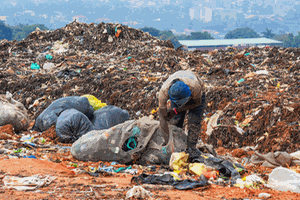Dear minister, explore domestic air transport

Simon J. Mone
What you need to know:
Recently, the Ministry of Works and Transport announced the complete closure of this bridge for three months to allow repair work to restore serviceability to this bridge. So, the public will not use this bridge during this period. All road users going to Central North and West Nile will go through Murchison Falls National Park
Early this year, the government, during monitoring, detected that the Karuma Bridge that connects Northern Uganda to the rest of the country had developed high-risk cracks. As a result, the government restricted movements on this bridge to allow for closer monitoring and repair work. It caused inconveniences to the public.
Recently, the Ministry of Works and Transport announced the complete closure of this bridge for three months to allow repair work to restore serviceability to this bridge. So, the public will not use this bridge during this period. All road users going to Central North and West Nile will go through Murchison Falls National Park. Movement is also available through Lake Kyoga and the Eastern route.
These alternative routes have increased the travelling distances and times for the public to their destinations. Remember that national parks and the water are not available for night transport.
In October, movement through the Katonga Bridge will not be possible, and travellers will have to take longer alternatives. So, Karuma Bridge has been closed to the public as repair works begin. Soon, Katonga Bridge will be closed for reconstruction, and this will cause inconvenience to travellers to Western Uganda.
Rather than road transportation, we must start to consider the other modes of transport. Fortunately, Uganda’s transportation sector is not lacking other modes of transport. The railway network links Kampala to the North, the East, and the West. The travelling public could have rail transport available. By quickly making railway transport available, we will worry less about a closed bridge at Katonga or Karuma. We also have an efficient water transport system.
These modes ensure people can move themselves and their merchandise to their destinations. Then we have air transport.
Of the four modes, the most preferred means of transportation has, however, been the road. The reason is that roads are cheaply (cost-effectively) available in every community and village. Compared to air, rail, and water transport, one can move at any time (day or night) by road. Thanks to efforts by the government and the other agencies to make connectivity easier by road. But what happens when the road system gets expected failures like the Katonga bridge (hit by environmental) factors and now at Karuma bridge (due to aging)?
They require urgent repair. As this happens, we expect delays due to diversions. You have not considered that these bridges could be closed beyond the stated timelines, depending on the extent of the work needed. Consider that normal operations must continue – appointments and schedules by the public – business people, government officers, and everybody who intends to travel through these affected areas.
Think for a moment about the other means of transportation that could become an efficient substitute for closed roads. Our country is not short on airfield infrastructures that could solve this inconvenience. From Kajjansi, one can fly to Pakuba, Arua, Adjumani, and Moyo airfields to go to West Nile. Those who prefer Gulu can fly directly to Gulu airfield.
Those going to Western Uganda can use the Mbarara, Kasese, and Kisoro airfields and the other private airfields. In Eastern Uganda, travelers can fly to Jinja, Soroti, Tororo, Kotido, and Moroto to avoid the sickening traffic congestion on Jinja road. These airfields are available because the government commits money to maintain upcountry airfields. Flying to these places reduces the traveling time.
We should make use of these airfields. Yes. The costs of domestic air travel are high. However, the government can deliberately promote air transport.
Invite stakeholders and share on how to do it. Talk about subsidizing operational costs for operators and supporting private airfield operators. Talk about providing maintenance facilities for aircraft and aviation fuel. Let us make baby steps towards some of these desired goals. Encourage the local people to embrace domestic air transport.
Simon J. Mone Wodobalim Civil Engineer, [email protected]




